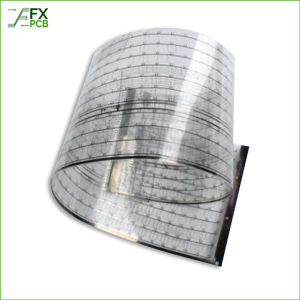
In the realm of electrical engineering PCB relays are vital components that facilitate the control and switching of electrical circuits. This comprehensive article aims to provide a deep understanding of PCB relays, their functionality, operation, and significance in power systems. We will start by defining PCB relays and explaining how they work.
Then, we will delve into their integration on circuit boards, explore relay circuit board designs, and discuss their crucial role in power systems, specifically focusing on power relays. By the end of this article, you will have a thorough knowledge of PCB relays and their applications in the power industry.

FX PCB can provide the ALN(Aluminum oxide) and AIO203(Aluminum Nitride) Ceramic PCB, we can make ENEPIG, ENIG, Immerison silver surface,you can check the material datesheet and our capability from the below tables.
The ceramic circuit board has the following characteristics: high-temperature resistance, high electrical insulation, low dielectric constant, low dielectric loss, high thermal conductivity, good chemical stability, and the thermal expansion is almost can be coefficients of components.
Ceramic PCB is actually made of electronic ceramic materials and can be made into various shapes. We are best Ceramic PCB Manufacturer in China
A PCB relay, or Printed Circuit Board relay, is an electronic device that controls the flow of electrical current in a circuit. It serves as a switch, opening or closing the circuit based on the presence or absence of a control signal. PCB relays are widely used in various applications, including telecommunications, automotive systems, industrial machinery, and power systems. These relays are specifically designed to be mounted directly onto a printed circuit board, allowing for easy integration into electronic systems.
To understand the operation of PCB relays, it is essential to grasp their internal mechanism. A typical relay consists of an electromagnetic coil, a set of contacts, and a mechanical assembly. When an electric current flows through the coil, it generates a magnetic field that attracts or repels the contacts, resulting in the opening or closing of the circuit. This electromechanical process allows the relay to control the flow of electricity effectively.
The integration of PCB relays onto circuit boards is a critical aspect of their design and usage. These relays are specifically engineered to be mounted directly onto the board, eliminating the need for additional wiring and connectors. Proper solder connections and efficient board layout techniques ensure secure attachment and reliable signal routing, minimizing signal distortion. This integration enhances the overall reliability, compactness, and ease of maintenance of electronic assemblies.
The design of relay circuit boards is crucial for optimal performance and reliability. Various factors are considered during the design process, including insulation capabilities, contact ratings, response times, and coordination with other protection devices. Relay circuit boards in power systems are particularly focused on handling high voltages and currents. Insulation materials are carefully chosen to withstand high voltage levels, and contact materials are selected to handle large currents without excessive heating or arcing. Proper spacing and layout techniques are implemented to ensure adequate creepage and clearance distances, minimizing the risk of electrical breakdown.
Relay design in power systems encompasses a broader scope than general-purpose relays. Power relays are specifically engineered to handle high voltage levels, often found in power transmission and distribution systems. These relays serve crucial functions, including protection, control, and monitoring. Power system designers carefully consider various factors when selecting and designing relays for power applications. These factors include fault detection sensitivity, coordination with other protective devices, response times, reliability, and the ability to withstand harsh environmental conditions. The goal of relay design in power systems is to ensure the safety, stability, and efficient operation of the overall system.
Power relays play a vital role in power systems by providing protection against faults, facilitating control functions, and enabling efficient power distribution. They act as the first line of defense against overcurrent, overvoltage, and other abnormalities that could compromise the integrity of the power system. Power relays are often part of a sophisticated protection scheme, working in coordination with other protective devices such as circuit breakers, fuses, and monitoring systems. The accurate and timely operation of power relays ensures the isolation of faulty sections and prevents widespread disturbances or damage within the power network.
A PCB relay kit refers to a package or set that includes all the necessary components and materials required to assemble a functional PCB relay. It typically includes a PCB (Printed Circuit Board) specifically designed for the relay, the relay itself, along with any additional electronic components, such as resistors, capacitors, and diodes, required for its operation.
By using a PCB relay kit, individuals can gain hands-on experience in circuit assembly, learn about relay functionality, and explore different design options. These kits offer a cost-effective and educational approach to understanding the inner workings of relays and can be an excellent learning tool for electronics enthusiasts.
PCB relay kits are widely available from various electronics suppliers, hobby stores, and online marketplaces. They come in different configurations, offering a range of features and capabilities to suit different project requirements. It’s important to select a kit that matches your skill level, desired functionality, and the specific goals you wish to achieve with your PCB relay circuit.
PCB relays are indispensable components in the field of electrical engineering, serving a crucial purpose in power systems and various other applications. Understanding their operation, integration onto circuit boards, relay circuit board design, and their significance in power systems is essential for engineers and technicians working in the power industry. By harnessing the capabilities of PCB relays, power systems can achieve optimal performance, reliability, and safety. As technology continues to advance, the role of PCB relays in power systems will remain significant, adapting to the evolving needs and requirements of the electrical industry.

I am Peter Gong. I have been working in PCB and PCBA industry for 15+ years now. I have been a part of the PCB revolution with my dedication to circuit board technologies and creative ideas. I write in FX PCB to impart my knowledge on PCB and PCBA for all circuit board lovers, manufacturers, and users.
WhatsApp us